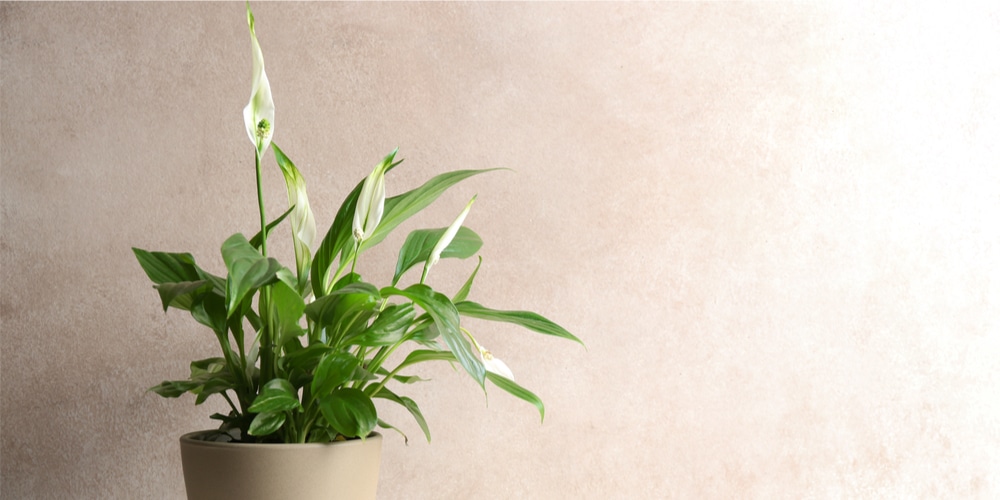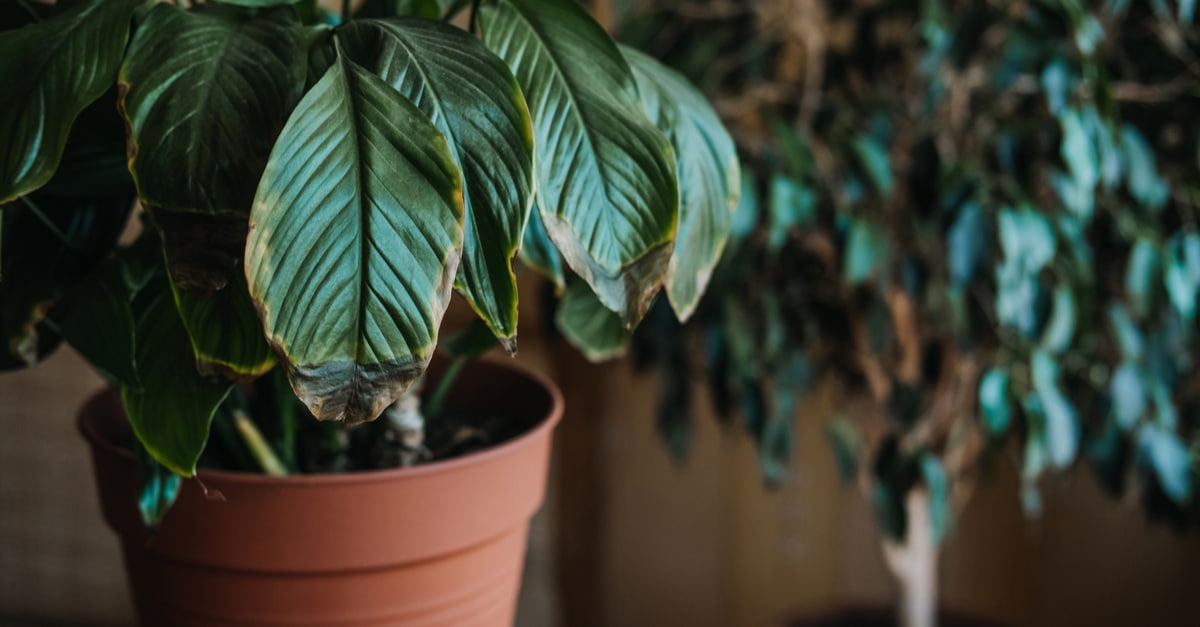Peace lilies are the ideal choice if you are looking for an indoor plant with a bright green color that produces stunning white flowers with an appealing scent. Native to the tropical Southeast Asian forest, these plants are not demanding. However, to ensure they thrive indoors, you’ll need to recreate (as close as possible) the conditions of a tropical jungle. That means providing them with adequate indirect sunlight every day, placing them in proper soil, and giving them the water and nutrients they need. Overwatered peace lilies can suffer from root rot and eventually die.
While sounding simple, knowing how much water you should give to a plant is not trivial. Too much or too little can cause severe damage to your plant. But what can you do with an overwatered peace lily? And how do you know water is the problem? To find out the answers to these questions, keep reading our recommendations. If you noticed something that seems off with your plant, look for the signs we included in this guide and take adequate action to revert the damage. The good news is that you can still save your plant, provided that you give it adequate care!
Overwatered Peace Lily: What to Look For

Excess watering can cause severe damage to your Peace Lillies: in the worst-case scenario, your plant may also die with too much water. But how to recognize that water is causing your plant damage?
The first symptom of overwatering is curled leaves. However, that might also be a sign of underwatering or inappropriate lighting. You will have to closely monitor your plant to ensure you know what’s wrong with it.
Over time, an overwatered peace lily looks pale and yellow. Look at the bottom of the plant for yellow leaves: discoloration should start at the edges and cause them to engulf. Plus, too much water for an extended period can cause your plants’ leaves to develop edema. Brown tips and water blisters are symptoms of severe damage. Also, your plant will stop growing due to excessive water. Roots may start to rot, causing your Peace Lilly to become unable to absorb nutrients.
The Cause of The Symptoms
As the plant starts taking too much water from the soil, it develops the symptoms we described in the previous section. With time, roots lose their ability to absorb water, bringing photosynthesis to a halt and stopping growth. As the soil remains soggy, the lack of oxygen causes roots to suffocate or die from bacterial or fungal infections, which tend to strike as the plant weakens.
The primary cause of overwatering is giving your plant water too frequently. You can reverse that by making changes to your watering schedule. If you don’t think that might be it, don’t worry. Other factors can affect your plant’s ability to absorb water. Learn how to recognize them to take adequate measures to save your plant. Keep reading to learn more about what may be causing your plant’s health issues.
Inadequate Pot Size
Pot size is crucial for the healthy growth of your plant. You should select a container that allows for adequate spacing that shouldn’t be too large for your peace lilies. Planting your lilies in a pot that is too big for them can cause overwatering.
As the plant’s water requirements as minimal, the soil will take more time to dry. Stagnant water and soggy soil cause the problems described in the previous sections. Make sure you choose a container to support your plant’s growth while ensuring proper nutrient absorption. It is best to select a small pot and then transfer your plant to a new vase as it grows.
Pot Material
So you just purchased your plant, and you are now thinking about what container you can plant it in. While not many people know about it, the material of your pot does have an impact on the water absorption levels for your Peace Lilies. Avoid materials such as plastic and ceramic: they will retain water and can cause soggy soil. Instead, go for terracotta pots, which are porous enough to allow water to drain out.
Growth Conditions
Soggy soil also has to do with the amount of transpiration. Evaporation plays a role in eliminating moisture. That’s why you should water your plant more during the hot days of summer. However, if the air is too humid, there will not be enough transpiration, causing roots not to uptake all the water in the soil, which will remain moist. Make sure you adjust your watering schedule according to the weather conditions. Reduce water frequency in the winter and increase it during summer, especially if you live in a dry region.
How To Save Your Plant
While an overwatered Lilly might look sad, you don’t have to lose hope in its survival. You can take a couple of actions to save your peace Lilly and allow it to thrive again. Avoid waiting for it to recover by itself, as you will risk causing even more severe damage to your plant. Instead, take the measures we recommend as soon as you suspect symptoms of overwatering. The sooner you take action, the more chances your plant will have to recover.
For starters, you must move your peace lily from the waterlogged soil and plant it into well-drained mixtures. If your plant’s roots rot, you will have to sterilize the new container to avoid infecting the new growth. Make sure you select the right pot. Wait for the roots to adapt to the new soil and only water your plant when necessary. Feel it with your hands to make sure you know when it is time to water your plant: if the soil is dry two inches below the surface, water it slightly. Ensure you place the plant under adequate sunlight.
Remember not to fall into the trap of fertilizing your plant to speed up its recovery. Stay away from added nutrients until the plant establishes: wait at least four months before using fertilizers again.
Overwatered Peace Lily: The Bottom Line
With our tips, you should now be able to know what to do with an overwatered peace lily plant. Make sure you take the measures we recommend and keep the plant at ideal temperature and humidity conditions to ensure it can thrive.
Related Article: Bathroom Plants That Absorb Moisture
